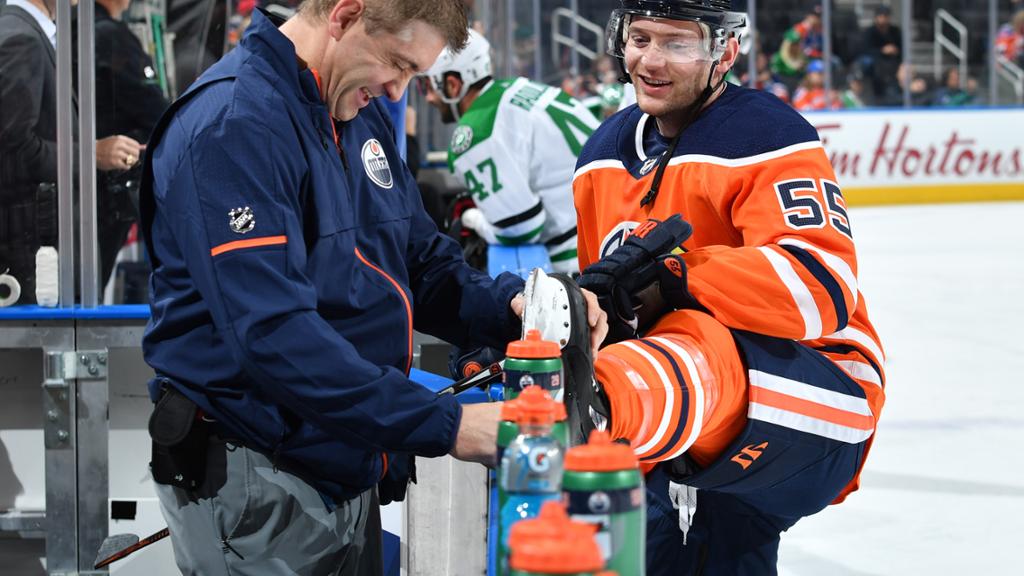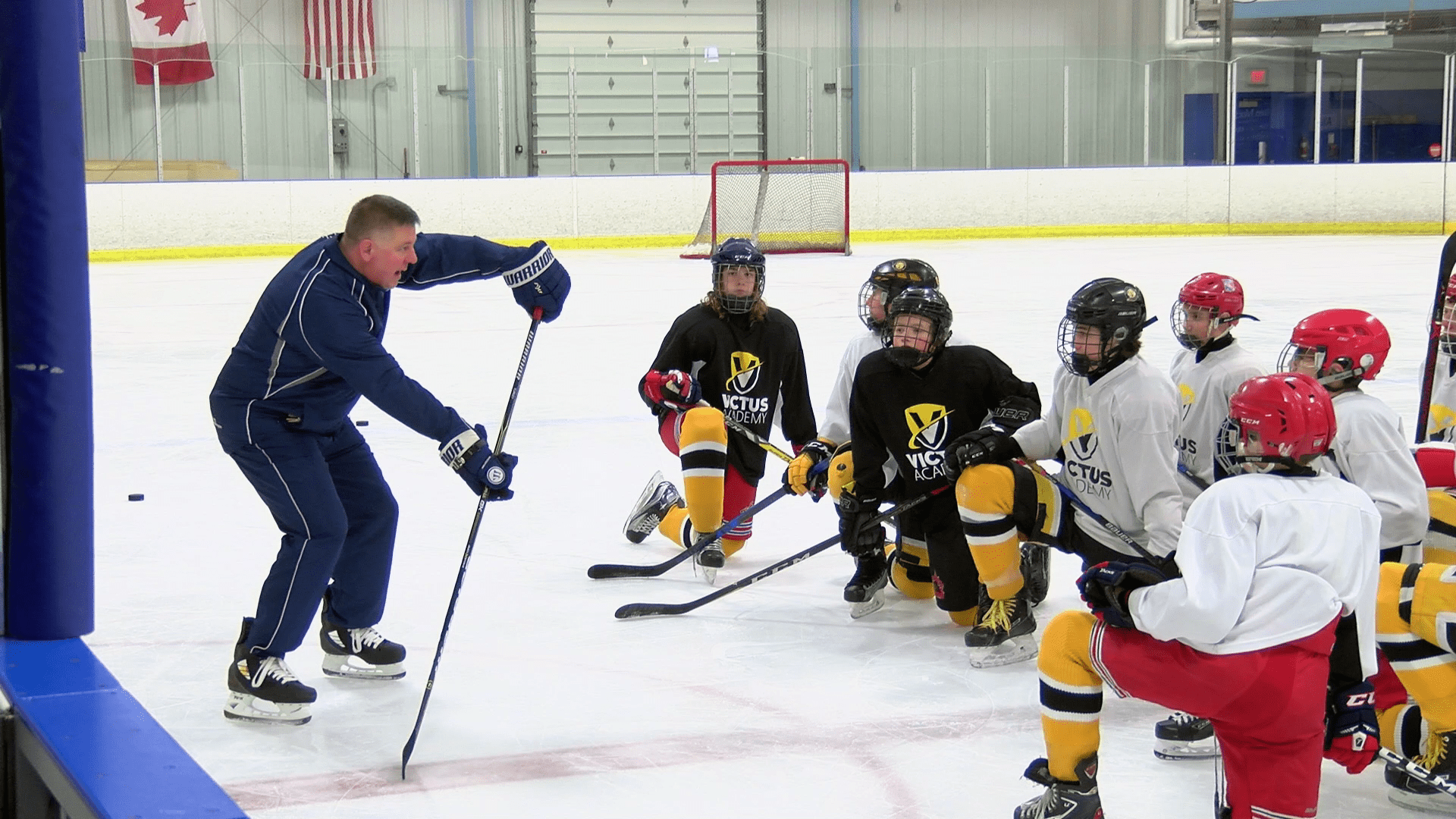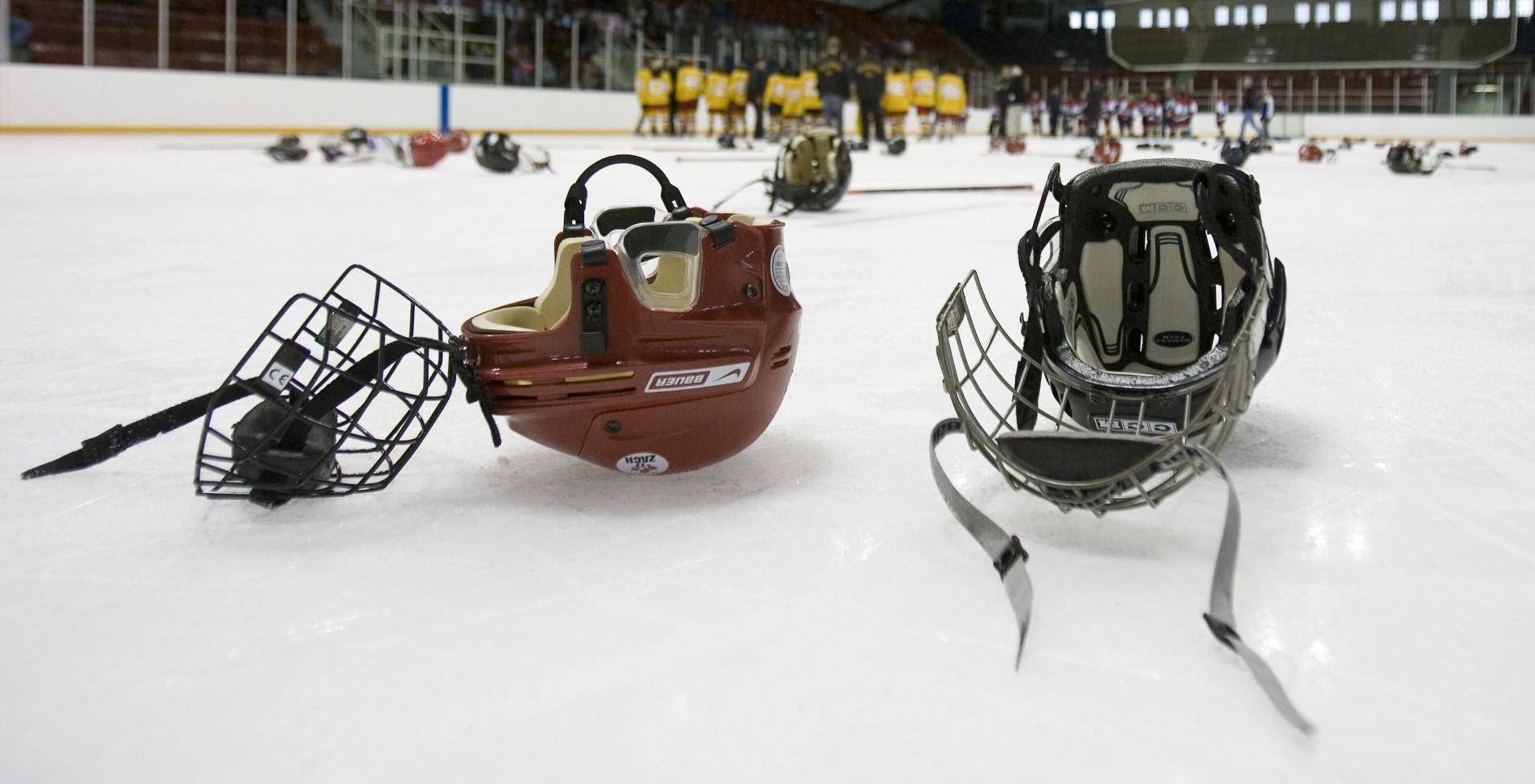When watching an NHL game, you usually don’t hear much about either team’s equipment manager. That’s because he’s not on the ice shooting the puck nor is he standing on the bench yelling orders or arguing with referees. The equipment manager is a behind-the-scenes professional who may not have much time in the spotlight, but he is a vital part of any professional hockey team.
Without an equipment manager, extra stress would be added on the players and coaches to keep their equipment in order both on and off the ice. The process of getting a new stick to a player in the event of a break would not be as streamlined and would greatly slow down gameplay.
These unsung heroes are highly respected by the team, but most fans and viewers know nothing about them. In fact, it can be difficult for even the most diehard fans to name their team’s equipment managers. So, let’s take a look at what they do and why they are so important.
Long Hours
Equipment managers are often at the rink even longer than the players! Many get there first thing in the morning to start getting things organized, whether for practice or for a game. They’ll head to the locker and tidy things up, putting things in order so that players can get suited up and be prepared as quickly as possible after they show up. But their responsibilities don’t stop there, as they are often on-site during practice, games, and even for several hours afterwards to plan for the next few days or weeks.
Take Care of the Gear
A good equipment manager knows the needs of every player and can recite their favorite gear by heart. They will organize the player’s gear and often perform maintenance on it when needed. This includes sharpening skates, breaking in sticks, and cleaning pads, jerseys, and gloves. If a piece of equipment has been through the ringer and no longer looks to be functional, the manager is responsible for ordering a new piece and making sure it is prepared in a timely manner.
The manager also has to have equipment ready for travel and needs to keep track of every piece. This involves coordinating with the airlines and local delivery crews as well as being familiar with opponent’s arenas and locker rooms so as to efficiently set up shop for the players. There is a lot of research that goes into this, but nothing is as valuable as in-game experience.
Financial Responsibilities
Equipment managers are also often involved in budgeting, buying, and keeping track of expenses. Each team has a certain budget that they want to stick to for equipment, and it is the manager’s job to ensure that they are compliant with this budget.
Equipment vendors are always on the search for teams to buy their products, and they must often go through the equipment manager. The manager will speak with these sellers and determine if certain items are right for them, and then try to negotiate pricing for these products that will fall within the team’s budget.
The manager is also responsible for ordering new equipment and keeping a ledger of how much has been spent. This means that they can often be found in an office going over bills and spreadsheets. This often happens during the morning skate when all the players are on the ice and the equipment does not need to be actively maintained. Still, it requires the ability to multitask efficiently.
Laundry
This may not be a glamorous task, but it is an important one. Hockey is an aggressive, physical sport, and those jerseys and pads can develop quite a funk of they aren’t kept clean. Equipment managers will often take care of laundry tasks after practices and games so that everything can be ready to go for the next session.
In-game responsibilities
While planning and maintaining are important parts of the equipment manager’s job, his most high-pressure tasks take place at game time. If a player breaks a stick or a skate, he has to know exactly where to get a spare one and bring it out as quickly as possible. On the bench, he may be responsible for taping up a new stick or lacing a skate, doing so in a rushed manner so that the player can get back on the ice in a hurry.
He’s also responsible for rotating sets of gloves, as players hands tend to get sweaty and they’ll require a new set every so often. It takes quite a memory to know every player’s preference, but equipment managers have this ability and can do so without blinking an eye. They’ll also be responsible for finding the right pads for an emergency backup goalie in the rare event that one is needed.
Stay in tune with the players
The players have much respect for the equipment managers, and that is because they know how to find the right equipment and fine-tune it to their needs. Equipment managers are in constant communication with the players about their sticks, skates, pads, helmets, and anything else that might need changing. Many are former hockey players and may even have valuable advice about what might be helping or hurting a specific player.
Equipment managers will sometimes get on the ice with the players and observe their motions if they have complaints about a certain piece of equipment. From there, they might have ideas about what needs to be changed – whether it’s the equipment or the player’s use of it.
Overall, the equipment manager is one of the most important members of the team, as he keeps things running smoothly behind the scenes as the players focus on the game at hand. He might not be making headlines after every victory, but you can almost guarantee that he played a large role in the success of the team thanks to his preparation and dedication.






